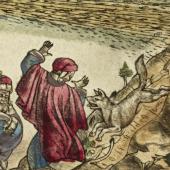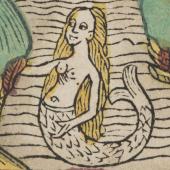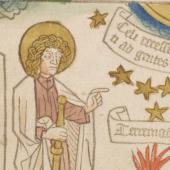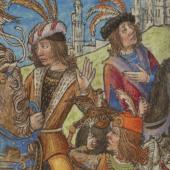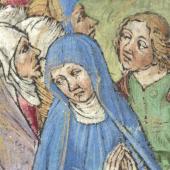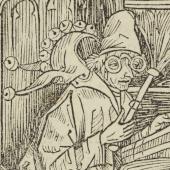‘Finely coloured cuts so beautiful they have no parallel’
Private lives of print
Woodcuts were first used to illustrate printed books in the 1460s, but printing such images in colour was a challenge beyond the capabilities of all but the most ambitious early printers. Woodcut images were, however, frequently coloured by hand.
The hand colouring of some types of book was an essential part of their marketing. In Paris in the 1480s a number of printers began to produce luxury printed Books of Hours, entering a market still dominated by their manuscript counterparts. The wood and metal cuts within these printed Hours were often lavishly hand coloured, mirroring and competing with those produced by specialist manuscript illuminators.
It was common practice for printers to produce deluxe copies of their works for presentation to patrons, church leaders, local noblemen, or members of the royal court. Professional hand colouring was a striking way to embellish these presentation copies. On a more mundane level, domestic owners of books often added their own colour to printed images, enhancing and decorating a treasured possession.
